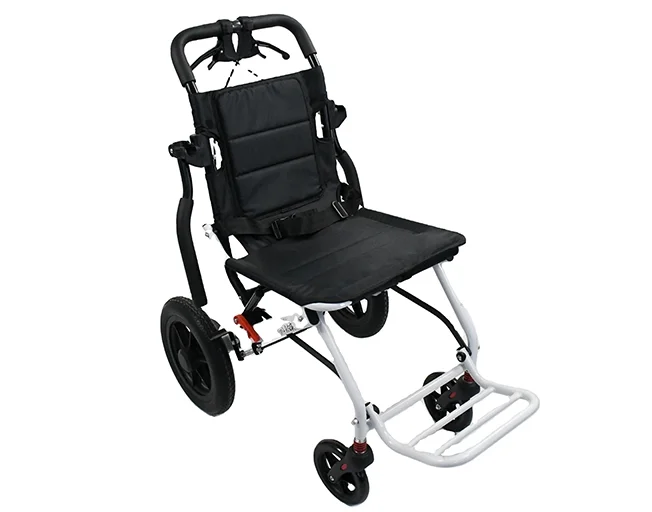Choosing the Right Wheelchair: Key Considerations for Clinical Experts
Time : Aug 28, 2025 View : 1,489
Picking a wheelchair isn’t just grabbing any model off the shelf. It’s about finding the right fit for someone’s body, daily life, and where they hang out. This guide breaks down the key steps for clinicians, from checking out physical abilities to pairing the chair with everyday needs. With real-world tips and examples, it’s here to help pros make choices that ramp up mobility, keep things comfy, and let users stay independent.

Clinical Assessment and User Profiling
Selecting the perfect wheelchair starts with a detailed check-up that focuses on your body condition and everyday needs. This step is super important to make sure the chosen wheelchair helps you move around easily and keeps you healthy in the long run.
- Evaluating Physical and Functional Needs: A health expert needs to look at your body size, how strong you are, how much energy you have, and any health issues you might face. For example, if your arms get tired fast or don’t work well, a powered wheelchair might be the better pick compared to a manual one. On the other hand, if your arms and upper body are strong, a light manual wheelchair could be great. It lets you stay active and do things on your own.
- Postural Support Requirements: Keeping your body in the right position isn’t just about feeling comfy. It also stops problems like back curves or sore spots on your skin. Wheelchairs with parts you can adjust, like the backrest, seat size, and leg holders, help keep your body straight all day long. The detachable and adjustable orthopedic leg hooks are a boon for patients recovering from traffic accidents. These options are especially helpful for people with tricky seating needs.
- Considering Lifestyle and Environmental Factors: The way you live matters a lot when picking a wheelchair. Do you move through tight spaces at home? Or do you go over bumpy ground outside? Your wheelchair should fit those places. Take the 12-inch white model as an example. It folds up fast and stays small, which is perfect for cramped spots or when you’re traveling.

Categories of Wheelchairs and Their Clinical Indications
Once we know more about you, finding the right kind of wheelchair gets easier. Generally, wheelchairs come in two main types—manual and powered. Each type works best for different health needs.
- Manual Wheelchairs: Active vs. Passive Use: Manual wheelchairs are a good fit for people who can push themselves or have someone to help. Folks who are active often like lighter frames that are easy to move around, but still tough. Check out the XY-809. It’s built to feel comfy and works well for daily use. The frame is welded with high-strength aluminum profiles; a folding seat back; a back-turning armrest; an up-turning foot pedal; folding frame. All these things make it simple to carry around while keeping it strong and sturdy.
- Power Wheelchairs for Complex Mobility Needs: Powered wheelchairs are the way to go if pushing yourself is too hard because of weak muscles or nerve problems. Their electric motors take the effort off you and give you different ways to control them. Aluminum alloy material, carbon transfer process, dual charging mode, lithium battery one key folding frame, easy to load the car, and travel. These details make them handy both inside your house and out in the open.
Frame Design and Material Selection
The way a wheelchair’s frame is made changes how it feels to ride, how weight is spread, and how easy it is to carry. These things affect how you use it every day.
Folding frames are awesome for trips or storing away, but they might not save as much of your energy when you push. Rigid frames, though, help you use your strength better. The downside? They need more room to store. Look at the 12-inch white model. Its foldable armrest shows how even small frames can be flexible without feeling heavy.
What the frame is made of decides how tough and heavy it is. Aluminum is a nice mix of being affordable and strong. Titanium soaks up bumps well, but it costs more. Carbon fiber is super light and great for speed, but you can’t change it much to fit your needs.
Seating Systems and Pressure Management
Having a good seat setup is key to avoiding issues like skin sores. It also helps keep your body in the right shape when you sit for a long time.
A seat that you can tweak should match how your hips sit, the curve of your back, and the length of your legs. You can adjust different parts to make it just right. Thickened Oxford cloth seat cushion, no fatigue even after sitting for a long time. This kind of padding keeps you cozy even after hours of sitting. To stop skin problems, you can use things like air cushions or gel pads. Some seats even have systems that switch pressure around. Moving your position often and using materials that let air through also cuts down on risks to your skin.
Adjustability and Modularity in Wheelchair Design
Being able to change things on your wheelchair means it can grow with you. This is helpful whether you’re a kid getting taller or if your health changes over time. Designs that let you swap out pieces, like footrests or back supports, are super useful. You don’t have to buy a whole new chair. This is especially great for kids. As they grow up, the wheelchair can still fit them and give the same support through every stage.
Transportability and Caregiver Interaction
How easy a wheelchair is to handle matters just as much for the person helping you as it does for your comfort. This is especially true if you travel a lot or move around often. Light models that fold up quickly take the stress off caregivers when loading or unloading. It has a dual charging mode lithium battery, one key folding frame, and easy loading. These perks make some wheelchairs perfect for people who travel a lot and want to stay independent.
Clinical Guidelines for Product Trial and Prescription
A team of experts working together makes sure you get the right wheelchair. They test it in real-life situations before deciding on the final choice.
Therapists and doctors team up to check how well the chair fits. They test things like how you sit, how you push yourself, and how you move through different places. Then, they tweak the chair to match your needs. Many programs even let you try it out with help from sellers before making the final call.
Ongoing Training and Support for Clinicians
Keeping up with new wheelchair designs helps doctors and therapists give better advice. They can use the latest tools and ideas from trusted companies like XUNYU Medical.
XUNYU Medical is known for making high-tech mobility gear that fits all kinds of health needs. They help everyone, from kids in rehab to older adults needing support. Their products include light manual chairs like the XY-809 and electric ones that move smoothly between indoor and outdoor spaces, like those in their D01 series. Aluminum alloy material, thickened seat cushion, dual charging mode, lithium battery. If you need something small for travel, check out their 12-inch white chair. They also have special rehab options with seats you can adjust. Plus, all their stuff comes with global safety stamps like ISO, CE, and FDA. This means you’re safe no matter where you go. Their wide range of products creates a full system for getting around, built to last and keep you secure at every step.
FAQ
Q: How do I know if I need a power wheelchair instead of a manual one?
A: If you get tired super fast or don’t have enough arm strength to push yourself even a little bit every day, a power wheelchair might be the better choice. A doctor can check and tell you for sure.
Q: What makes modular wheelchairs better than fixed ones?
A: Modular wheelchairs let you change things like seat size or footrest height over time. This is really important if your needs change or if you’re still growing, like kids often do.
Q: Can I trial different models before making a purchase decision?
A: Yup! Lots of sellers have programs where you can test out wheelchairs. Doctors help check if it fits your body and matches your life before you decide to buy it.


